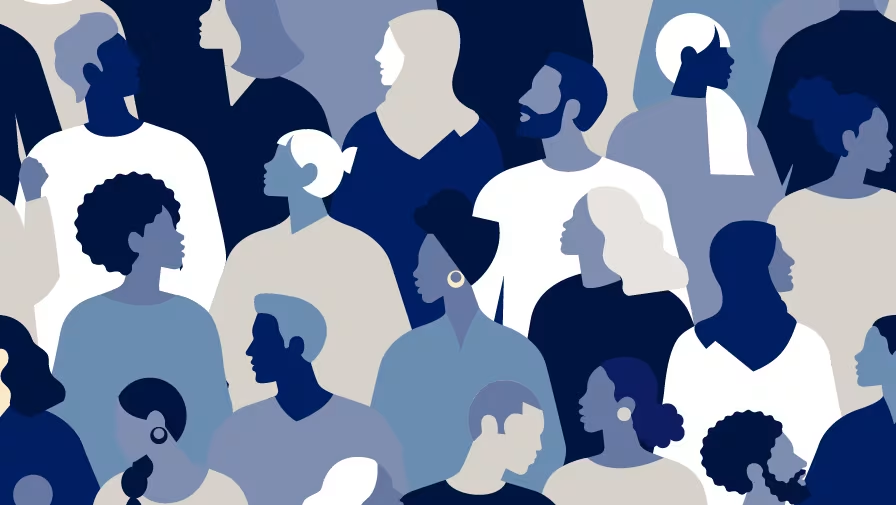Research shows that allowing people to express themselves authentically in the workplace is good for both those individuals and the organisations that employ them: it can enhance wellbeing, increase job satisfaction, improve employee motivation and more.
But it takes more than policies and procedures that formally protect employees’ rights to express their social identities for these benefits to be realised. Indeed, unless employees feel safe and supported to take up the invitation extended to them, few will.
Pride Month reminds us that in many organisations, underrepresented social groups, including the LGBTQ+ community, continue to be stereotyped, marginalised and negatively targeted for expressing their social identities. The harsh truth is that the risk of being one’s authentic self is not distributed equally. In fact, it can come at a cost. Employees from marginalised social identities can face backlash and bias from colleagues for simply being themselves.
These sanctions need not be conspicuous or even conscious. They may range from excluding a colleague from a particular discussion or outing, to denying an employee a promotion because they do not “fit” with the prototype of a leader.
Research has found that LGBTQ+ staff in Britain had been targeted with “negative comments or conduct from work colleagues” over the preceding year because of their identity. For those whose identities intersect across multiple marginalised groups, the barriers can be even greater. The same research stated: “One in 10 Black, Asian and minority ethnic LGBTQ+ staff (10 per cent) have similarly been physically attacked because of their sexual orientation and/or gender identity, compared to 3% of white LGBTQ+ staff.”
Similarly, women of colour describe code-switching to fit into the dominant culture of a group and hiding their authentic selves to avoid making others uncomfortable.
From talking the talk to allyship
Leaders and organisations often have the right talk when it comes to high-level commitments to support employee self-expression. But is this rhetoric embedded in the everyday culture of their companies? How can leaders ensure their organisations behave as allies to facilitate self-expression?
One way is to create an environment where all employees feel a sense of belonging, regardless of their social identities. Here, belonging refers to an individual’s ability to be themselves and be accepted as an equal in a particular environment or context. It is important at both an individual and organisational level: belonging can increase job performance and reduce the risk of job turnover.
We know that to establish a sense of belonging, people look to their surroundings for cues that will either lower or raise uncertainty about the acceptance of their social identity.
There are several ways leaders can ensure those positive signals are communicated to employees: by improving representation, removing stereotyping cues and highlighting their belief that potential is widespread.
The latter of these – highlighting your belief as a leader in others’ potential – can have a powerful effect on how members of a stigmatised or underrepresented group, such as members of the LGBTQ+ community, perceive their level of belonging and respond to it.
We know from earlier research examining underrepresented students’ sense of belonging within science, technology, engineering and maths (STEM) fields that the language used by leaders to frame potential is powerful. In one of our experiments, underrepresented students (women undergraduates specialising in science, technology, engineering, and maths) presented with a statement suggesting that professors in their field believed almost all students had high performance potential reported a greater sense belonging in STEM than underrepresented students presented with a statement suggesting professors in their field believed only some students had high performance potential.
This was despite the fact that both statements did not identify any particular group as having or lacking potential. Their belonging increased enough that it essentially equaled the belonging of majority group members (undergraduate men in STEM).
Positive social relations focused on creating change offers another powerful way for leaders to help foster belonging among underrepresented groups. In another research project, we studied what straight people said when they wanted to communicate their support for LGBTQ+ individuals. Ironically, the more common messages were not the most effective. Most straight people communicate about social connections – sharing how much they care about and support LGBTQ+ individuals.
While social connection messages were valuable, what was even more effective was when heterosexuals shared their belief in social change – highlighting the progress still to be made. Expressing support for your LGBTQ+ colleagues is only a good thing. But leaders who want to be more effective can speak about or show what they as individuals, or the organisation, are doing to change the status quo.













